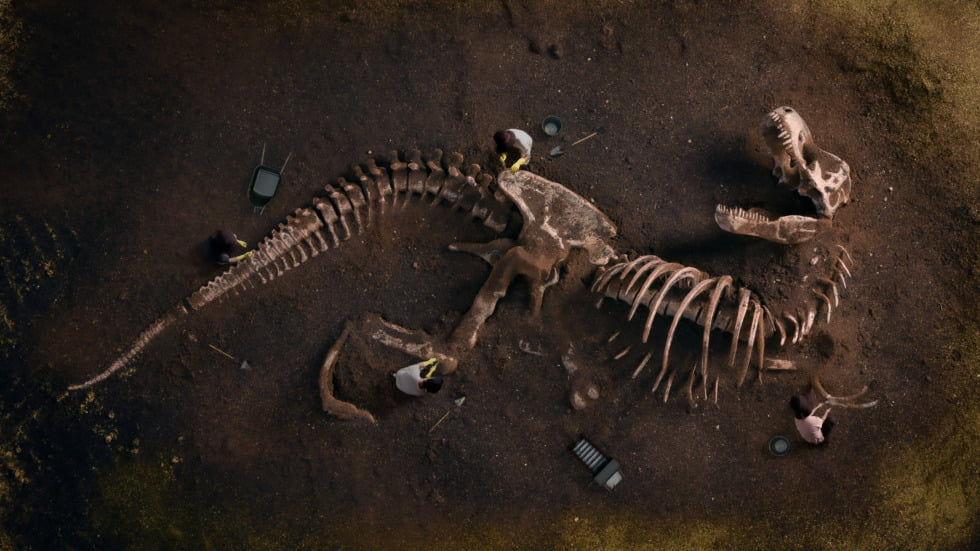
A hike in the Karoo gives you a lot to think about – and the time to do it. It’s well worth the contemplation because this is not only one of the world’s most ancient deserts, but a place where the earliest evidence of the development of mammals can be examined and studied.
It’s strange to think that our distant ancestors began their journey during the time of reptiles. But perhaps also good to know that the end of those slippery characters opened up the way for mammals to flourish and emerge as the line that would lead to humans.
The mammal-like reptiles of the ancient Karoo played a pivotal role in the development of true mammals. Through a series of adaptations in their jaws, teeth, skull, brain, and respiratory system, these reptiles acquired characteristics that foreshadowed the emergence of mammals.
Opening up the pages of this era requires a definitive leap in the conception of time, because nothing about them resembles us, but nevertheless our connection is irrefutable. So when next hiking or travelling in the Karoo, give our fascinating and adaptable forerunners who lived and flourished here millions of years ago, some thought.
Notes to an old memory
- Known as therapsids, these remarkable creatures emerged during the Permian period, approximately 250 to 300 million years ago. At this time the Earth was dominated by reptiles, but a subgroup of reptiles began to differentiate from the rest in the area we now know as southern Africa.
- Synapsids were distinguished by several anatomical features, such as a single temporal opening on each side of the skull, a more erect posture, and differentiated teeth. These adaptations provided them with an evolutionary advantage, allowing them to explore new ecological niches and diversify their feeding strategies.
- One of the most significant advancements was the development of a more sophisticated jaw mechanism. While earlier reptiles had jaws comprised of a single bone, mammal-like reptiles possessed a jaw joint composed of two bones, the articular and the quadrate.
- This change allowed for greater jaw mobility and increased bite force, playing a crucial role in the evolution of mammals, as it facilitated the transition from a reptilian bite-and-swallow feeding style to a more mammalian chewing and grinding process.
- Another crucial adaptation was the evolution of the dentary bone, which formed the lower jaw and held the teeth. In earlier reptiles, multiple bones contributed to the lower jaw, but in therapsids, the dentary bone became a singular and primary component. This enlargement of the dentary bone in turn, provided space for more teeth – and an increased number of teeth resulted in enhanced chewing capacity and the ability to process a wider range of different foods.
- In addition to all this exciting change, these reptiles displayed modifications in their actual teeth structure; they exhibited a heterodont dentition, meaning that they possessed different types of teeth specialised for various functions; some teeth were sharp and pointed for piercing, while others were broader and flatter for grinding.
- This heterodont dentition is a characteristic feature of mammals and considered a significant step towards the teeth found in modern mammals, including incisors, canines, premolars, and molars. Well! Our ancestors knew a thing or two already!
- Mammal-like reptiles had skulls with fewer bones and a larger braincase compared to earlier reptiles. The expansion of the braincase provided more space for the development of a larger brain, which allowed for increased sensory perception and greater cognitive abilities. (So, right there, we should be grateful to our distant lizard-like relatives.)
- This enlargement of the brain played a crucial role in the subsequent evolution of mammals, as it facilitated the development of complex behaviours and more sophisticated social interactions – all useful for the ultimate development of humans.
- An advanced respiratory system paved the way for the transition to endothermy, or warm-bloodedness. These reptiles possessed a diaphragm-like muscle called the muscular diaphragmaticus, which aided in breathing by expanding and contracting the thoracic cavity. This muscular diaphragm was a precursor to the diaphragm existing today, which plays a vital role in respiration. The evolution of endothermy in mammals allowed for increased activity, improved stamina, and the eventual colonisation of diverse environments.
It is inarguable that these mammal-like reptiles of the ancient Karoo occupied a crucial position in the evolutionary timeline leading to the emergence of true mammals. The transition from reptilian characteristics to mammalian traits demonstrates the inexorable continuity of the development of true mammals – all of which took place in what we now experience as the Great Karoo.
Heuningland: African & Karoo tours to stir the heart and lift the soul
We are proudly South African and have a fervent love of the Great Karoo, its people and its unique vegetation and animals. We are passionate conservationists of nature and would like to share our knowledge acquired through years of travel and touring experience. We are therefore able to offer custom-designed and distinctively different tour options:
- Hiking/camping trails or guided self-driving tours through the ancient landscape of the Karoo.
- Tailor-made safaris to any destination in South Africa, Namibia, Zimbabwe, Zambia, Mozambique, and Botswana.
Find out more at: www.heuningland.com




